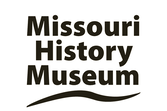|
In addition to the cultural sites and landmarks listed below, St. Louis is home to numerous neighborhoods, each with a very distinct identity. If you are interested in exploring the neighborhoods of St. Louis, visit our Neighborhood page.
The nation's tallest monument at 630 feet, the Gateway Arch has beckons visitors with its iconic, awe-inspiring shape. The vision of renowned architect Eero Saarinen, the Gateway Arch commemorates Thomas Jefferson and the role St. Louis played in the westward expansion of the United States. A visit to St. Louis is not complete without standing at its base and capturing some timeless images; and the view from the outside is only half of the experience. Make sure to take a trip to the top for breathtaking views of Saint Louis. The Missouri History Museum has been active in the St. Louis community since 1866. Founding members created the organization "for the purpose of saving from oblivion the early history of the city and state." Exhibits on the 1904 World's Fair, World War I, and westward exploration are among the highlights of the museum's many offerings. The museum is located in beautiful Forest Park and admission is free to all. The Saint Louis Art Museum was founded in 1879, at the close of a decade that saw the establishment of art museums in great cities across the eastern half of the United States. This Museum's comprehensive collections bear witness to the inspirational and educational goals to which its founder aspired and the moral and democratic imperatives he embraced. The famed statue of King Louis IX, an iconic image associated with the city, is located in front of the museum's entrance. Housed in Cass Gilbert's Palace of Fine Arts from the 1904 World's Fair, the museum sits in Forest Park and admission is free. Forest Park, officially opened to the public on June 24, 1876, is one of the largest urban parks in the United States. At 1,293 acres, it is approximately 500 acres larger than Central Park in New York. The 1904 World's Fair—The Louisiana Purchase Exposition—drew more than 20 million visitors from around the world to Forest Park. Countless people continue to enjoy the park's beauty to this day. The Saint Louis Zoo was awarded "Best Zoo in the Country" (2017) by USA Today, and is regularly ranked as one of the top ten zoos in the United States. Home to more than 18,000 exotic animals representing 700 species, the zoo is a microcosm of all major continents and biomes of the world. The St. Louis Zoo has made every effort to house their animals in their natural habitats. Set in the rolling hills, lakes and glades of Forest Park, the Saint Louis Zoo is a great place to visit anytime, and admission is completely free. Founded in 1859, the Missouri Botanical Garden is the nation's oldest botanical garden in continuous operation and a National Historic Landmark. The Garden is a center for botanical research and science education, as well as an oasis in the city of St. Louis. The Garden offers 79 acres of beautiful horticultural display, including a 14-acre Japanese strolling garden, and English Woodland Garden, a geodesic dome housing a fully tropical micro-environment, Henry Shaw's original 1850 estate home, and one of the world's largest collections of rare and endangered orchids. Cahokia Mounds State Historic Site preserves the remains of the most sophisticated prehistoric native civilization north of Mexico. Within the 2,200-acre tract lie the archaeological remnants of the central section of a massive ancient settlement. In 1982 UNESCO designated Cahokia Mounds a World Heritage Site for its importance to our understanding of the prehistory of North America. According to archaeological finds, the city of Cahokia was inhabited from about A.D. 700 to 1400. At its peak, from A.D. 1050 to 1200, the city covered nearly six square miles and was inhabited by 10,000-20,000 people. Admission to this unique site is free, but donations are accepted and appreciated. St. Louis Union Station, once the largest and busiest passenger rail terminal in the world, is now one of America's great marketplaces. Union Station first opened in 1894, but ceased operation as an active train terminal in 1978. Union Station reopened in August of 1985 as the largest adaptive re-use project in the United States. The Grand Hall features the original "Allegorical Window," a hand-made, Tiffany stained glass window. Union Station is home to dining and shopping options, as well as a luxury hotel. A world-class Aquarium is due to open in 2018. Although workers began clearing ground for the building on May 1, 1907, dedication of the Cathedral and its first mass did not take place until October 18, 1914, when the Romanesque superstructure was completed. Consecration of the church took place more than a decade later on June 29, 1926. The church houses the world's largest collection of hand-tiled mosaics. The collection uses nearly 42,000,000 glass tesserae in over 7,000 colors to cover 83,000 square feet. The installation began construction in 1912 and was completed in 1988. The basilica also houses burial crypts and an outdoor sculpture to promote racial harmony. Visitors of all faiths are welcome. The Cathedral Basilica is open 7:00 am until 5:00 pm, with guided tours available from 10:00 am until 4:00 pm. The Old Cathedral Museum, located on the west side of the Cathedral, contains many artifacts and relics from the early days of the Catholic Church in St. Louis, as well as historical information. When Pierre Liguest Laclede and his First Lieutenant Auguste Chouteau founded the City of St. Louis in 1764, Laclede dedicated the square west of his home, to church and graveyard purposes. The first Catholic Church in St. Louis, built on this site in 1770, was a small log structure. In 1776, the mission of St. Louis became a canonical parish and the second log cabin church was built. Its bell, the gift of Lieutenant Governor Don Piernos and enriched by 200 Spanish silver dollars in its casting, can be seen today in the Old Cathedral Museum. |













